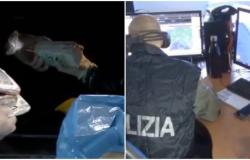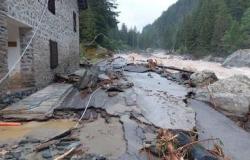Africa and Europe are increasingly closer and ready to exchange electricity and green hydrogenthanks to strategic corridors, such as TUNITA, which will connect Sicily with the coasts of Tunisia.
Just over a year after its official presentation, which took place in Munich on 23 March 2023 on the occasion of the HyAccelerator event, the project SouthH2 Corridor was signed by Italy, Germany and Austriathe three European states personally involved in its creation.
As with H2Move, the European initiative for the development of electric mobility based on hydrogen fuel cells, SoutH2 has also been included among the IPCEI (Important Project of Common European Interest).
Italy, in particular, will once again play an important role in the development of the hydrogen pipeline that will allow future exchanges between Europe and North Africa. Minister Pichetto Fratin commented:
The creation of the South2 Corridor is an important initiative that we have supported from the beginning, to develop the clean energy potential of the African continent and connect it to Europe, promoting growth and security on both shores of the Mediterranean. The project falls within the spirit of Mattei Planwhich seeks mutually beneficial partnerships with African countries
WHAT IS THE MATTEI PLAN FOR COOPERATION BETWEEN ITALY AND AFRICA
On 29 January 2024, President Meloni presented the Mattei Plan in front of representatives of the European Union and 46 African countries; among the guests, in addition to Ursula von der Leyen, there was also Azali Assoumani, President of the African Union.
The Government brought to mind the name of Eni’s former CEO to imply the desire to create a “new” partnership between Italy and African States, far from “predatory or charitable behavior” and focused on democracy, respect and growth for both parties involved.
The nine African countries involved in pilot projects are: Morocco, Tunisia, Algeria, Egypt, Ivory Coast, Ethiopia, Kenya, the Democratic Republic of Congo and Mozambique.
The Italian executive has created a control room which is entrusted with the task of draw up a report annually on the state of the art of the project; the expected duration of the Mattei Plan is five years, with the possibility of renewal.
The control room is chaired by Meloni, the Minister of Foreign Affairs, all the ministers involved in the projects and the managers of the public companies and institutions collaborating on the project.
THE TRILATERAL PARTNERSHIP FOR THE SOUTH2
Among the objectives set by the European Fit for 55 plan to halve emissions of climate-altering gases there is also the development of the green hydrogen supply chain, which includes the SoutH2Corridor project, which “aims to strengthen energy security for the main industrial demand clusters of the respective countries, while supporting the climate objectives of the European Union”.
The southern corridor it won’t be the only way transit for green hydrogen, but together with five other future projects it will constitute the large-scale exchange network of the energy carrier, in order to reach the objective of 20 million tons of renewable hydrogen by 2030 (10 produced domestically, 10 imported).
The signing ceremony, held in Brussels, saw the participation of ministers and senior officials from the three countries and the European Energy Commissioner, Kadri Simson.
German Chancellor Olaf Scholz, during a press conference with President Meloni, declared:
Strengthening cooperation for the diversification of energy supply is very important to me. The expansion of supply networks in Europe will benefit us all and will certainly increase energy security. For this reason I am pleased that we have agreed to continue work on a new pipeline to transport natural gas and hydrogen between Italy and Germany.
THE DEVELOPMENT OF THE EUROPEAN GREEN HYDROGEN NETWORK

As mentioned, the South2 Corridor is not a stand-alone initiative, and to date it runs alongside Scan-Med, the Scandinavian-Mediterranean corridor for the low-emission transport of goods by rail, to cut the CO₂ emissions of the country by 55%. ‘Europe compared to pre-industrial values.
Italy is responsible for the most important part of the implementation of the project, which according to forecasts it should be completed in 2030, with a total of 2,300 km of network to be developed almost from scratch for some sections and to be renewed and upgraded for others (27% and 73% respectively), in order to guarantee safe and efficient hydrogen transport.
The pipeline will start from Algeria, passing through Tunisia; since we are talking about green hydrogen, the electrolysis processes will be powered by guaranteed renewable energy, i.e. wind and solar.
As for TUNITA, SoutH2 will have an underwater part to reach Mazara del Vallo.
Once it has crossed the entire peninsula, the hydrogen pipeline will pass through the export points with Austria and Switzerland, finally reaching southern Germany via GCA’s H2-WAG and EUSTREAM’s H2.

North Africa’s green hydrogen import potential stands at around 450 GWh per day, while exports at around 170 GWh.
contact us: [email protected]









